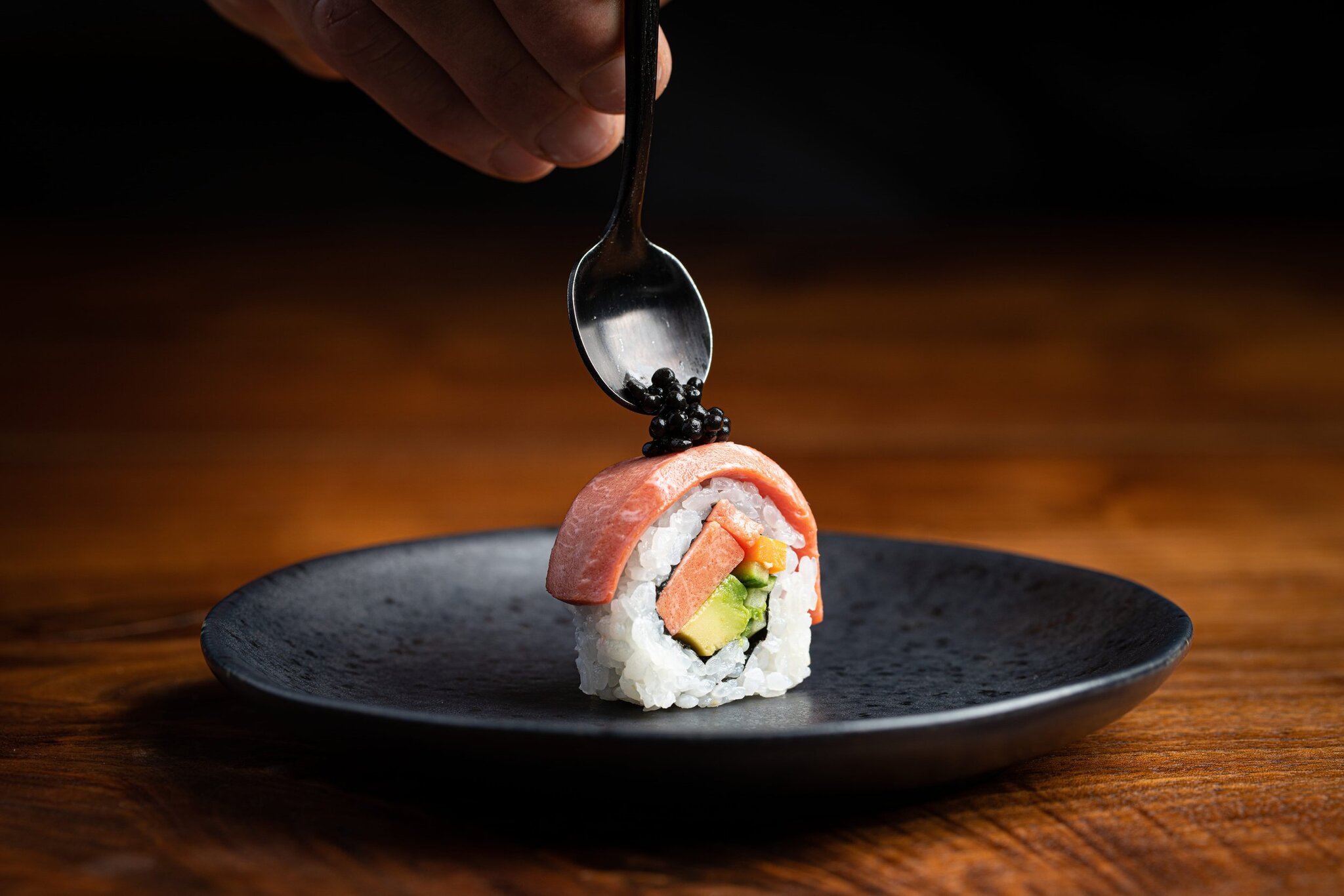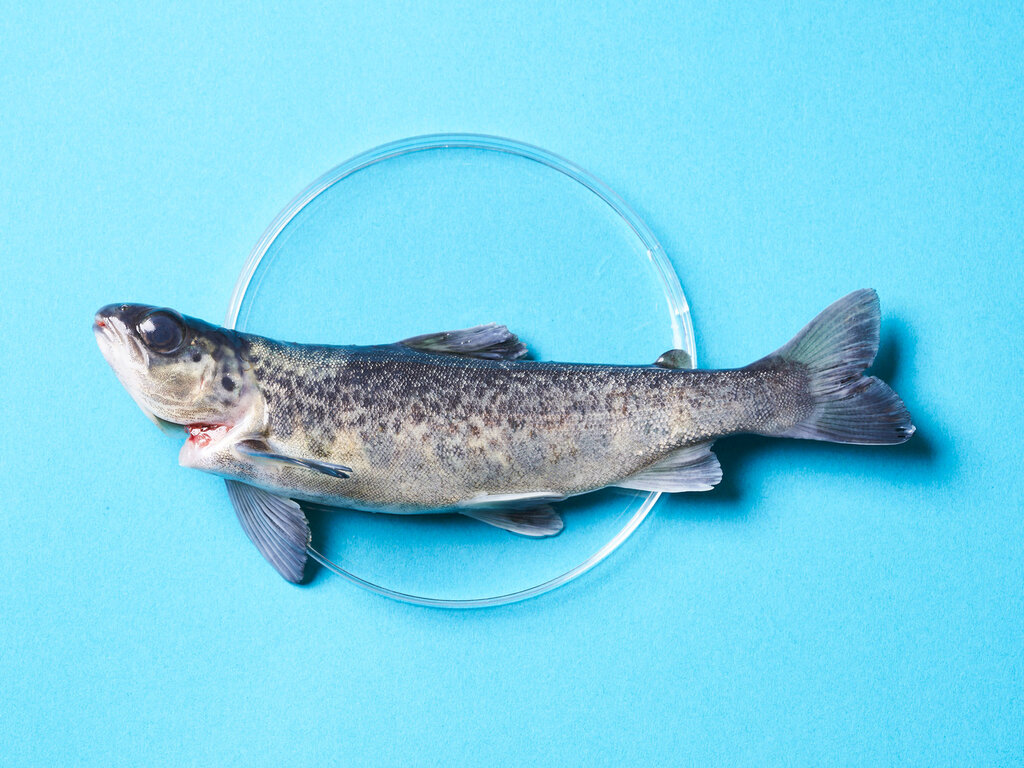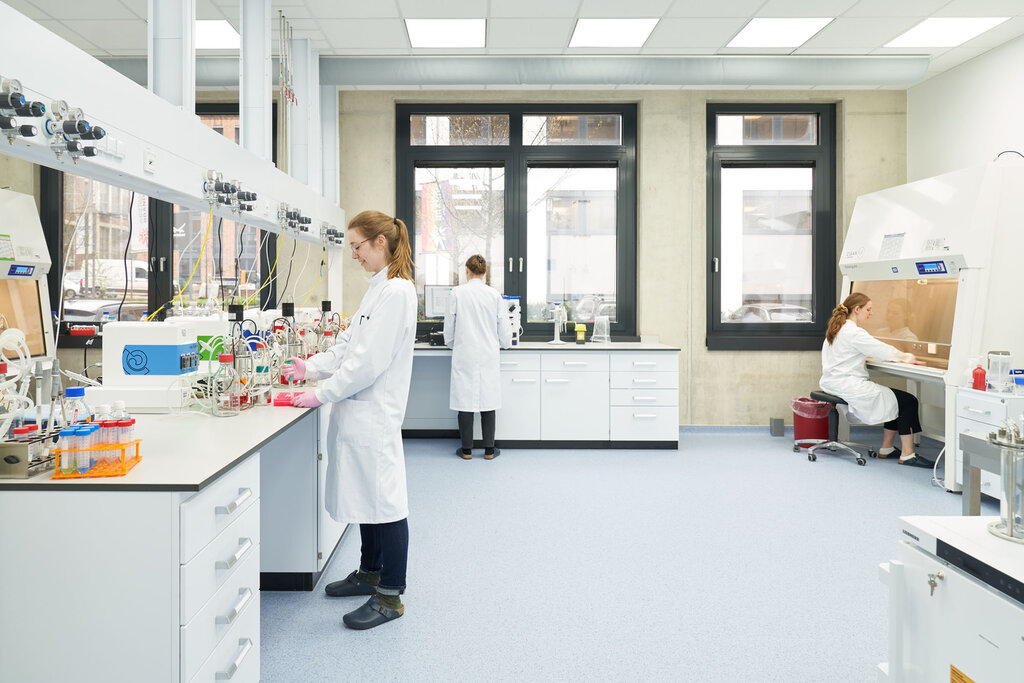Cover Story
Can cultivated fish avoid pitfalls of cell-based meat?
It’s unlikely fish and seafood created in a lab will become part of everyday diets soon but its exponents argue it has unique selling points that indicate long-term success, Andy Coyne reports.

It seems like two steps forward and two steps back when it comes to cell-based or cultivated-meat.
Regulatory approval in Singapore and the US (at a national level) was followed by bans, or threats of bans, in Italy and other European countries and, at the US state level, in Florida and Alabama.
Technological breakthroughs continue to happen but the cost of the growth medium needed to allow the meat to grow in lab conditions remains eye-wateringly high.
Meanwhile, the scaling of production to a level where roll-out to foodservice or retail customers at a meaningful, and affordable, level remains in the words of Josh Tetrick, CEO of US cell-based protein company Good Meat “a massive challenge”.
Under the radar
But while cultivated-meat continues to make the headlines, fish and seafood created in a lab – admittedly a newer concept – has, relatively speaking, flown under the radar. This might suggest cell-based seafood is, no pun intended, too small fry to make similar headlines (or to incur bans) or it might suggest it does not face the same problems as its meaty brethren.
The process is similar. Cultivating fish starts with taking a small sample of tissue from an animal and developing it in a lab using a growth medium.
Like cultivated meat, cell-based seafood has attracted high levels of investment from those who have bought into arguments around sustainability, a lack of animal suffering and technology being able to play its part in tackling food security globally.
So, what is it that investors are hoping to see?
A miracle would be the answer if you are one of the nascent industry’s many sceptics; or a major technological advancement that can feed the world and save the planet – I exaggerate for effect – if you are a true believer.
It was a confluence of imbecility.
Julian Mellentin, New Nutrition Business
Among the sceptics is UK-based Julian Mellentin, founder and director of consultancy New Nutrition Business.
On the money being poured into cell-based protein, he says: “Financiers have had money to burn and have [been fed] marketing lines about magical protein transitions. It was a confluence of imbecility.
“There were false expectations on the part of investors and they wanted to believe.
“It’s like Tulip Mania in the 17th century or the dot.com bubble all over again. It is a solution in terms of a problem.”

Credit: Bluu GmbH / Anna Brauns
In the believer camp sits Nick Cooney, managing partner of Lever VC, a New York- and Hong Kong-based investment firm that has backed two lab-grown fish/seafood businesses, Hong Kong’s Avant and Germany’s Bluu Seafood.
No wide-eyed optimist by any means, Cooney has previously described this as a long-term play.
“Of course, faster success is – almost – always preferable to slower success but that would be the case for any company in any sector,” he says, when asked about the seemingly slow process of getting product to market.
A mixture of entrepreneurship and altruism
It’s worth looking at what cell-based companies are trying to achieve before assessing the degree of success they have enjoyed so far and weighing up their future prospects.
Like their cell-based meat peers, cultivated-seafood businesses are a mixture of entrepreneurship and altruism built onto a platform of science and technology.
The altruism – when it comes to sustainability – can be summed up by the Good Food Institute (GFI), a non-profit think tank that has a particular focus on the potential of plant-based meat alternatives and cultivated protein.
Specifically on seafood, Seren Kell, head of science and technology at GFI Europe, says: “With Europe importing three times more seafood than it produces, there’s a pressing need to find alternatives. Cultivated seafood can help meet demand locally and sustainably, enabling governments to rebuild overfished stocks while reducing by-catch and discards.”
All of which is irrelevant, of course, if the product never reaches the market.
Signs of progress
But there have been some, admittedly small, signs of progress.
Just this month, Israel’s Wanda Fish unveiled its first cultivated bluefin tuna toro sashimi.
Like other such launches in the cultivated-protein space, it will only be available in the high-end foodservice sector in its domestic market but it’s a start.

Wanda Fish’s bluefin tuna toro sashimi. Credit: Noam Preisman
“We chose to develop cultivated toro bluefin tuna as it is a premium product, which today can be sold well above $100 a kg - one of the most expensive fish products and well above sale price of land meats,” Wanda Fish CEO Daphna Heffetz tells Just Food.
“It’s a rare case of when the product justifies the business case for an alternative product, even with its manufacturing cost, as they are today. This also allows us to have a solid business model, a rare luxury in this field.”
Also able to show progress is Bluu Seafood.
Last month, the company opened new headquarters and what it describes as Europe's first pilot plant for cultivated fish in Hamburg.
It is important to remember we are building an industry and a product from scratch.
Lou Cooperhouse, BlueNalu
It talks of state-of-the-art cell and molecular biology laboratories, process development space and a test kitchen for food applications on around 2,000 square metres of space.
Bluu Seafood says new fermenters, which have a capacity of 65 litres with the potential to expand to 2,000 litres, will enable it to cultivate muscle, fat and connective tissue cells from Atlantic salmon and rainbow trout in much larger quantities than before.
Impressive stuff but, more generally, there will be people wondering why, several years since the industry emerged, it has not progressed further and got closer to unveiling a product that can be enjoyed more widely than by a few high-end diners at an exorbitant cost.
Lou Cooperhouse, co-founder, president and CEO of California-based BlueNalu, says: “It is important to remember that we are building an industry and a product from scratch. BlueNalu has been focused on building scalable technologies that result in healthy, delicious seafood that performs the same as its wild-caught counterparts.
I’d be 90% confident you're able to find cultivated-fish/seafood products in the market in 2025.
Nick Cooney, Lever VC
“While we can’t speculate on timelines, we can share that in the near-term, BlueNalu is focused on continuing our scale-up journey, getting regulatory approval in the US, Singapore and additional nations around the world, and then launching our products into commerce within selected restaurants.”
Like Wanda, BlueNalu is launching its first product – bluefin tuna toro – in “premium foodservice establishments, including sushi and fine dining restaurants”.
Dr. Cornelius Lahme, who heads up the marketing and communications operation at Bluu Seafood, is also eyeing a launch.
“If everything works well we will have at the end of this year or the beginning of next year an approval for cultivated fish in Singapore,” he says.
There does often seem to be a frustrating ‘jam tomorrow’ aspect to the nascent industry but Cooney at Lever VC says: “I’d be 90% confident you're able to find cultivated-fish/seafood products in the market in 2025 in at least one if not two or three countries.”
The obstacles
So what barriers are there to stop cell-based seafood developing at pace?
The cost of the growth medium is a big one. This allows the animal cells to grow in the lab and is usually a by-product of the dairy industry.
The existing product is in high demand, having traditionally been bought up wholesale by the biotech and life science industries.
Lahme at Bluu Seafood says: “Alongside bio-processing, this is one of the cost drivers. A large part of our research work focuses on reducing the cost of the growth medium. We are making continuous progress in this area. As scaling increases, the price will also decrease.”
BlueNalu’s Cooperhouse adds: “It’s important to remember that when this industry began, no food-grade supply chain existed and no animal-component-free media existed but the industry has come a long way over the past five years and BlueNalu now has these processes in place.
“While the cost of the growth medium remains one of the biggest drivers of COGS [cost of goods sold] for companies in this space, we are actively addressing this challenge by sourcing lower-cost alternatives and collaborating with our strategic partners, including [animal-feed group] Nutreco. These efforts will significantly lower costs without compromising quality.”

Lou Cooperhouse, BlueNalu co-founder, president and CEO.
Those lower cost alternatives may mean using a growth medium that is plant-based.
Heffetz at Wanda Fish says: “We are working on using plant-based and lower-cost alternative components and also closely following the progress in the industry in this space. This is one area where the success of one company, can really benefit the entire industry.”
However, Lever VC’s Cooney does not see the growth medium issue as the major barrier to the industry’s making more immediate strides.
“The cost of medium is not a real hurdle in the short term. It's the main long-term hurdle to get to unit economics that work at scale, but it's not a barrier to selling at a smaller scale in the market. The bigger issues are regulatory approval and getting pilot scale production in place. Both are somewhat mundane, solvable challenges, they just take some time to work through.”
An advantage over cell-based meat
Another hurdle to overcome is resistance to the whole concept of animal protein created in a lab by some countries and some US states, resulting in bans or threats of bans.
Cooney believes fish/seafood may have an advantage over its meat peer.
“The seafood industry doesn’t have the same lobbying clout that certain animal agriculture producer industry groups do, for various reasons including the fact that so much seafood in Europe and North America is imported.
“So, there are not the same level of entrenched interests. In Europe and North America, there is probably less cultural symbolism with fish than there is with some other types of meat.”
Fear of the future and sticking to yesterday won’t get us anywhere.
Dr. Cornelius Lahme, Bluu Seafood
Lahme at Bluu adds: “As soon as changes occur, there are always people who are happy about the developments and others who reject them. This is a completely normal process. However, in current debates, cultivated fish is usually not the focus of attention. Usually, the discussion revolves around meat. But, in the end, it’s a similar process. We would love for people to recognise the potential in the technology. Fear of the future and sticking to yesterday won't get us anywhere.”
Cooperhouse at BlueNalu agrees. “The recent legislative movements in Florida and Alabama are a disappointing display of short-sightedness and governmental overreach, placing unnecessary constraints on an emerging industry that holds immense potential for these states and for the US. The United States imports up to 85% of the seafood that we consume and BlueNalu can help to displace imports, while also creating American jobs and providing a healthy, safe, and sustainable solution to feeding our future generations.”
Certainly, regulators in the US (at national level), Singapore, Israel and the Netherlands – whether of a result of such concerns or not – have been supportive of cell-based protein.
The question of price
Cultivated fish may have other advantages over meat, too. One is to do with price. Attaining price parity between lab-grown meat and conventional produce is seen as a major challenge but conventional fish produce tends to be sold at a high price, thus the price gap with cell-based may not be so great.
Cooney says the relative costs of conventional fare may help lab-grown seafood. “Seafood prices average several multiples higher than other conventional meats, so consumers are used to that. Most consumers also view seafood as an occasional choice as opposed to an everyday staple, which probably helps as well.”
The sustainability arguments linked to dwindling fish stocks and the world’s ever-increasing need for protein have been mentioned but cell-based seafood can also claim to be a healthier option than traditional products.

Part of Bluu Seafood’s new headquarters in Hamburg. Credit: Bluu GmbH / Anna Brauns
Lahme at Bluu says: “Many of the fish [sold as food presently] are contaminated with microplastics or heavy metals. However, these aspects can be excluded for cultivated-fish.”
Kell at GFI Europe agrees “This food can also deliver the omega-3 and other nutritional benefits of seafood while being free of the mercury and microplastics often found in fish, as well as the antibiotics used in aquaculture,” she says.
In the shorter term, however, other than the sashimi created for high-end restaurants, what is most likely to be created in a lab is a hybrid product blending cell-based fish and plant-based ingredients. One example is “fish balls” Bluu Seafood is working on.
“We plan to reach a production cost of €10 ($10.85) for 1kg of fish balls within the next three years. This cost will further decline with increased scale,” Lahme says.
Cooney thinks this is a sensible move. “I absolutely think blended products like fish balls are a great way to go. Even conventionally-produced fish balls are typically a majority plant-based ingredients and consumers are fine with that. Going from a minority conventionally-produced to a minority cultivated-fish is not a big change.”
Ultimately, while there is much detail to be pored over in terms of processes, costs and regulatory approval, the debate over the future of cell-based fish and seafood – like lab-grown meat – comes down to a simple question and that is whether consumers will buy into the idea.
Mellentin clearly thinks not. “People do not eat obvious technology. It’s fine if it’s concealed,” he says. “There will always be some people who will embrace it but it will be small in number.
“And sustainability is way down the list of people’s priorities. They see it as an industry problem to fix not theirs. They don’t feel they need a new type of food to be sustainable. What is the benefit to consumers of eating this entirely new product? Answer – there isn’t one.”
Solving resource issues
Others disagree. Hannah Cleland, a research analyst at Just Food parent GlobalData, says: “While cultivated seafood faces many similar cost, scale, regulatory and consumer perception challenges as cultivated meat, there are some distinctions.
“Firstly, replicating the texture of seafood is much harder, being the second most popular reason consumers are put off trying seafood alternatives in key markets in 2024. This could be a key selling point for cultivated and 3D-printed seafood over plant-based seafood, due to superior replication capabilities in the technology.
“From a sustainability standpoint, the carbon footprints of popular meats such as beef and lamb are much higher than for seafood. However, for communities where fish and seafood are a staple in consumers’ diets, the issue of depleting resources could be another motivator for mainstreaming cultivated seafood.
“Cultivated seafood products don’t necessarily have an easier path to market than cultivated meat but investing in markets such as Japan where the fishing industry has been declining, could receive a more positive response.”